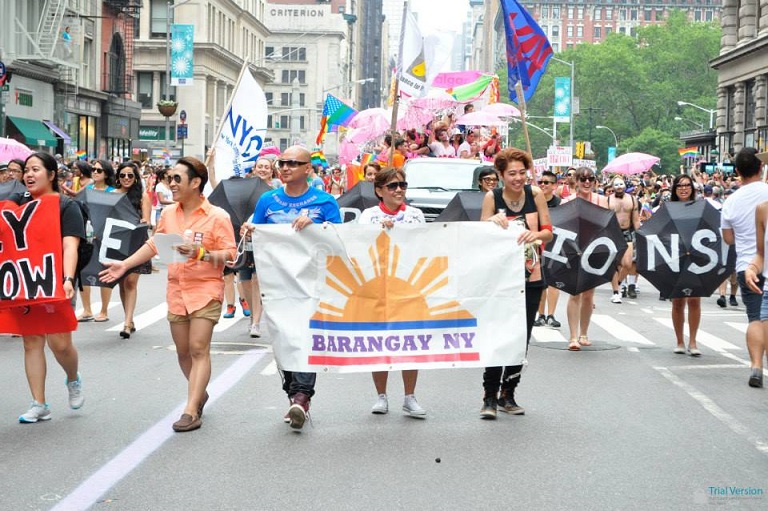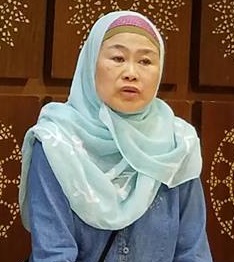A lesbian-positive film

By Joel David
Launched during the start of the current decade, the Vivamax arm of Viva Films swiftly dominated the subscription streaming services of Philippine cinema and never let up since. The answer will be obvious to anyone who checks out Netflix and several other so-called over-the-top (meaning bypassing middle agencies) services: specialized products, less costliness for the consumer, absence of censorship. It also doesn’t take a lot of figuring out to determine what material the service focuses on, which is what the majority of homesick overseas kabayans demand – sex, as much as the average film presentation can contain without devolving into gonzo pornography, softcore style.
Philippine-based recognition mechanisms still have to give Vivamax its due, but an American film festival, the FACINE International, already gave its grand prize last year to Lawrence Fajardo’s Erotica Manila: Foursome, a concatenation of TV-style shorts. Its gold winner for short film was a hard-hitting satire titled “How to Make an Effective Campaign Ad,” directed by Roman Perez Jr., who also took charge of the first theatrically released Vivamax project, titled Unang Tikim (literally First Taste, officially translated as First Time).
So far the film has attained the stature of moderate box-office performer, running into its second week in selected venues – certainly a far more preferable fate than the usual theatrical flop that characterizes even major releases nowadays. More surprising is the type of theme tackled by Unang Tikim: sex, as expected of a Vivamax production, but with the primary relationship transpiring between two women. To be sure, positively depicted lesbian narratives are not new to Philippine cinema, although they occur with far less frequency than gay-male stories. Marilou Diaz-Abaya, the first woman-filmmaker National Artist, arguably started the trend in 1986 with Sensual, also a “bold” (or sex-themed) venture like Unang Tikim.
The primary points to make regarding other early attempts at recuperating same-sex love stories between women is that first, they were mostly featured as subplots in straight-centered narratives; and second, they had to contend with the usual homophobic demonization of gay women in local releases. (I can only remember one other premillennial release, Mel Chionglo’s I Want to Live from 1990, as another woman-positive presentation; an earlier “event” movie, Danny L. Zialcita’s Lesbian and Me from 1982, resorted to visiting violence on its lesbian character, although it nevertheless features a sharply observed turn from another National Artist, Nora Aunor.)
The digitalization of film production during the millennial era brought with it a number of well-realized women’s love stories, most of it from independent producers, with Sigrid Andrea Bernardo’s 2013 Anita’s Last Cha-Cha standing out for being a coming-of-age tale, the distaff counterpart of Aureus Solito’s The Blossoming of Maximo Oliveros from 2005. In a remarkable category all its own is Joel Lamangan’s Sabel, a 2004 film based on the seemingly incredible though real life-based odyssey of a woman who started out as an easy-going teenager, entered the nunnery after giving birth, married the prisoner who raped her, then emerged after a long disappearance as a rebel warrior committed to a female spouse. (Sabel and I Want to Live were both scripted by yet another recent National Artist, Ricky Lee.)
Unang Tikim constitutes a throwback to the earlier sexualized treatments of lesbian film narratives, with one character’s bisexuality providing the crisis in the plot. It also desists from dealing primarily with “developments” in which one or the other character suffers physical homophobic retaliation – possibly a lack when we inspect actual lesbian stories, but strangely affecting in this case because of the respite it provides from the usual judgmental approach. The fact that Perez, in less than a decade of practice, has overseen well over a dozen film projects, alongside Vivamax’s determination to mount a widescreen-worthy attraction, has resulted in a work of ineffable sensuality and beauty.
What must have added to non-Vivamax viewers’ fascination is the fact that an impressive stable of talents has been residing in the studio – most of them necessarily excluded from mainstream TV-centered programs because of their readiness to bare flesh and engage in activities that may be considered less-than-wholesome, to put it mildly. The film embraces the central female couple’s class difference and even occasional bouts of rage alongside their expressions of passion, but always with a tenderness in its approach to their pain; when such respect for the humanity of Others is extended to the male interloper in their story, that kind of treatment makes total sense in the course of the unfolding of their difficulties.
The only complaint one might raise about Unang Tikim is how the measure of its throwback is too far off, so that the complications provided by more recent lesbian film romances seem to be far off in the characters’ futures. As if to dig in further, it provides a closure that nearly elevates its realistic material to the realm of the fantastic. But in terms of a narrative tradition that cannot boast of having enough happy endings, what the film purveys deserves to be regarded as an intervention worth maintaining.
Joel David is a retired professor of Cultural Studies at Inha University and was given the Art Nurturing Prize at the 2016 FACINE International Film Festival in San Francisco. He has written several books on Philippine cinema and maintains a blog at https://amauteurish.com.














